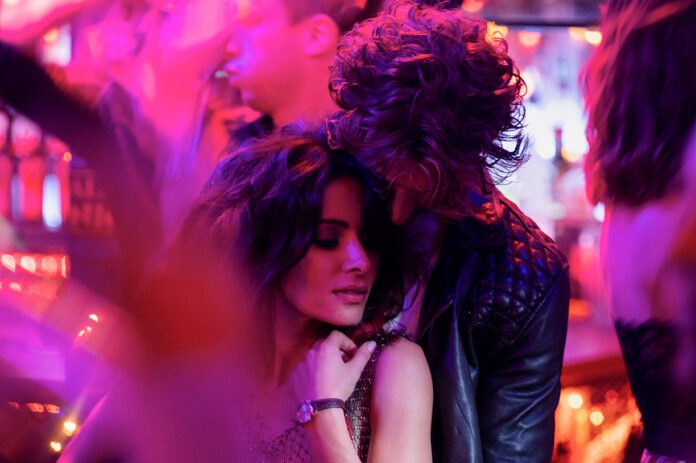In recent years, there’s been a new job title popping up on call sheets around the world: intimacy coordinator.
One such example is the new Netflix drama Sex/Life. Inspired by BB Easton’s book, 44 Chapters About 4 Men, the series centers on Billie, a suburban mother (Sarah Shahi) of two who takes a fantasy-charged trip down memory lane that sets her very married present on a collision course with her wild-child past. Her story unfolds while leaning into themes of female identity and desire.
Given how important the show’s intimate scenes were to the narrative, series creator Stacy Rukeyser tapped intimacy coordinator Casey Hudecki to help on set during those crucial moments. So what exactly does the job entail? In the words of Hudecki, intimacy coordinators “help tell the story that’s scripted while considering and advocating for the boundaries of the performers, and to make sure everyone is safe and informed.”
Rukeyser and Hudecki discussed the show’s key themes, the intricate process behind filming those more intimate scenes and the importance of bringing the female gaze to the screen.
How did you creatively work to put the key themes in this series — female identity and desire — front and center?
Stacy Rukeyser: I wanted to make a show that says that it’s okay for women to admit that we have desires, that we’ve had sexual experiences, and that we want to have more of them. Billie and Sasha are both smart, Ivy League-educated women, living successful lives, who also really enjoy sex. Usually when you see a female character like that, she’s the villain or the bad girl, or she gets punished for being wild, while men are being praised for being rakish and giving in to their desires. Making a show about a woman who wants sex, who is emotionally and physically fulfilled by partaking in this very normal, human behavior, is in and of itself a revolutionary act.
How have you creatively reflected that point of view in the series?
Rukeyser: All of our directors this season are women. We had six writers, including myself, and four are women. Many of our department heads are women, including our Production Designer and our Costume Designer. It was so important that the show was both written and brought to life through a female gaze.
From reading the first draft to filming, can you talk through the process of choreographing a sex scene?
Casey Hudecki: The first thing I do is read the script, and the level of detail on the page for this show was so helpful. I am always looking for the story behind the intimacy. For this show, I would talk to the director and Stacy and we’d all go, “Okay. What’s your vision? What do you want to see? What are the important moments?” Then we’d get together with the actors to rehearse and talk through the scene and the key beats. I get to have all the awkward conversations. I talk about where the actor is comfortable being touched, touching the other actor, what sort of barriers we’re going to put between them — all sorts of nitty gritty details.
This story is told through Billie’s point of view, and Stacy Rukeyser said she wanted to bring the sex scenes to life in a very realistic manner. Did you talk about that creative direction?
Hudecki: Stacy’s approach was always very much through a female gaze. I loved that approach, it aligns with my own, and it’s something I always consider when I’m choreographing scenes — for example, adding foreplay to the scene. I think having intimacy coordinators around now is going to help in general, because you have someone whose job it is to think about every aspect and offer ideas.
Can you talk a bit about how you approached writing and filming the sex scenes in this show?
Rukeyser: It was really important to me to have all the details of our intimate scenes written out on the page very, very specifically. I’ve heard from many actors that oftentimes when you get to a sex scene, the script just says something like, “And then they have sex.” Often people are too embarrassed to write the actual words on the page. But I really wanted to be much more specific than that, because each scene is not just about the sex. Each scene really is telling a story of what’s happening for Billie in the moment, emotionally and psychologically.
Discover more from SNAP TASTE
Subscribe to get the latest posts sent to your email.



